SOUTH AFRICA
Cape Town

Cape Town
Cape Town
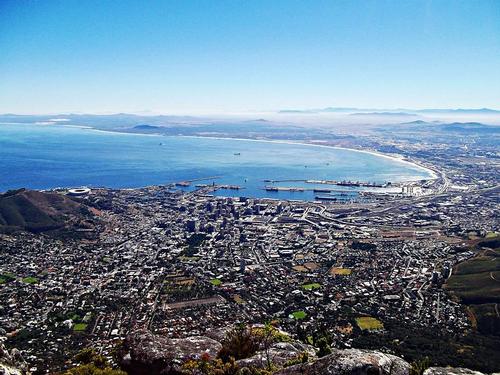 Cape Town View from Table MountainPhoto: Lindria Oosthuizen CC 3.0 Unported no changes made
Cape Town View from Table MountainPhoto: Lindria Oosthuizen CC 3.0 Unported no changes made
Cape Town, is the capital of South Africa. Cape Town's natural harbor is known around the world. Cape Town is located near the Cape of Good Hope. The city reflects the cultural amalgamation of Indonesian, Dutch, French, British and German settlers. The Bantoes and the Hottentots are the indigenous peoples that are an integral part of Cape Town culture. The bustling Victoria and Albert Waterfront and its unmistakable cultural scene are as attractive as the beautiful beaches, botanical gardens and famous penguins of Boulders Beach. The city attracts crowds of tourists from all over the world who come here to see the beautiful white sandy beaches and beautiful nature.
| advertisement |
| Hotels Cape Town |
Location
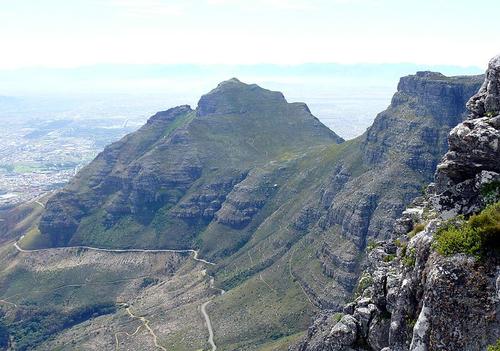 Devil's Peak Cape TownPhoto: Hilton1949 CC 3.0 Unported no changes made
Devil's Peak Cape TownPhoto: Hilton1949 CC 3.0 Unported no changes made
Cape Town is located on the northern end of the Cape Peninsula, which forms the most South-Western tip of South Africa. Table Mountain is characteristic of the city, which further consists of many high cliffs such as Devil's Peak and Lion's Head. The geographic coordinates of the city are 33.55 degrees South latitude and 18.22 degrees East longitude.
Weather
The geographic location of the city plays a critical role in Cape Town's weather. The city is located between two oceans, namely the Indian Ocean and the Atlantic Ocean, which have a significant impact on the weather. The weather in Cape Town in the summer months is calm with temperatures ranging between 15 ° C and 27 ° C. The summer season in Cape Town starts from November and lasts until February. The winter season in Cape Town runs from June and ends in August. The temperature in winter time is between 7 ° C and 20 ° C. Snowfall occurs in the regions of the Cederberg and Boland mountain range. Cape Town can be visited any time of the year, autumn and spring are considered the best times to visit this city.
History
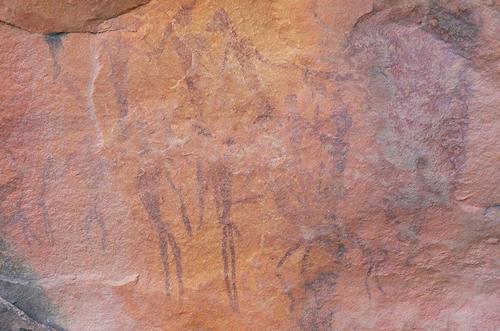 Petroglyphs Western CapePhoto: Jimfbleak CC 3.0 Unported no changes made
Petroglyphs Western CapePhoto: Jimfbleak CC 3.0 Unported no changes made
The Cape Peninsula and the Western Cape have been inhabited for thousands of years. The inhabitants originally lived from hunting, fishing and collecting edible plants. They are the ancestors of the Khoisan people of this time, which are the Bushmen (San) and the Hottentots (Khoikhoi). The Bushmen were hunter-gatherers, and the Hottentots kept livestock.
Antonio de Saldanha was the first European to land at Table Bay. He climbed the mighty mountain in 1503 and called it "Table Mountain". The large cross carved by the Portuguese navigators into the rock of Lion's Head is still traceable. Table Bay was known as 'Saldanha' until 1601 when the Dutchman van Spilbergen renamed the place Table Bay.
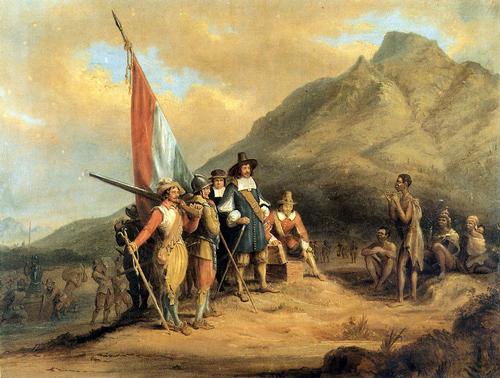 Jan Antony van Riebeeck sets foot in Table BayPhoto: Public Domain
Jan Antony van Riebeeck sets foot in Table BayPhoto: Public Domain
In 1652, the Dutch East India Company gave in to repeated requests and recommendations from their naval officers and finally decided to establish a permanent post. They sent three small ships, the Dromedary, the Reijger and the Good Hope under the command of 23-year-old Jan Antony van Riebeeck, a ship surgeon with the aim of building a stronghold on the shores of Table Bay. They wanted to grow vegetables, keep livestock and set up barter with the Hottentots. A hospital and a shipyard were also built for the repair of ships. The fortress of Jan van Riebeeck, later replaced by the current Castle of Good Hope, was Cape Town's first large building.
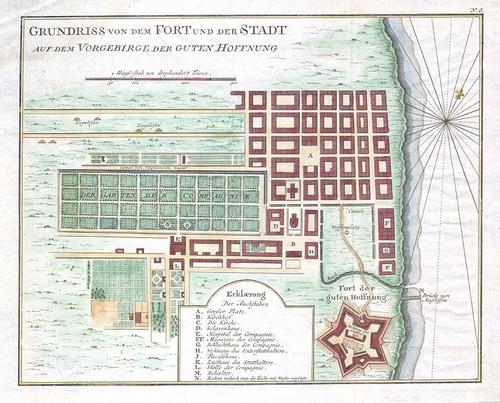 Map of Cape Town from 1750Photo: Public Domain
Map of Cape Town from 1750Photo: Public Domain
Simon van der Stel, governor from 1679, had a great influence on the colony for twenty years. He enlarged and embellished Van Riebeeck's garden and built Slave Lodge (today the cultural historical museum). During the governorship of Simon van der Stel, Huguenots who had been expelled from France by the revocation of the Edict of Nantes came from the Netherlands to Cape Town. During the war between Great Britain and the Netherlands (1780-1783), a British fleet sailed to capture the Cape, but the fleet was attacked and taken out by the French. The French supplied two regiments to help the Dutch defend the colony. Part of the large hospital on the outskirts of the city was designated as a barracks.
In 1814, Lord Charles Somerset became governor on behalf of England. Cape Town (Cape Town) became a municipality in 1840. The first elected parliament met on June 30, 1854. On November 28, 1872, full self-government for the Cape Colony was proclaimed by a proclamation by Sir Henry Barkly, who laid the foundation stone for the current Parliament Building in 1875.
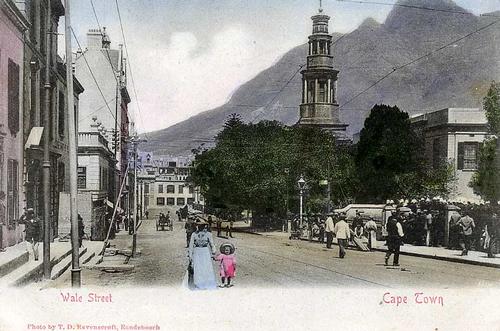 Cape Town in 1905Photo: Public Domain
Cape Town in 1905Photo: Public Domain
In the years between the formation of the Union in 1910 and the historic parliamentary elections of 1948, South Africa grew into a powerful industrial nation. The National Party won its first election, led by DF Malan in 1948, marking the beginning of apartheid. For the first time, Afrikaners came to power and legal segregation based on racial lines became the main thrust of the policy.
The 1994 elections inaugurated the first black president, Nelson Mandela, who headed a government of national unity. Tourism becomes the most important economic industry and has ensured the development of the Western Cape. There are approximately 75,000 people employed in the tourism industry in this area. Two out of three tourists to South Africa include a visit to the Western Cape in their itinerary. Five of the six largest insurance companies are headquartered in Cape Town. The province is also the largest clothing and textile producer in the country. Cape Town is the headquarters of the South African oil industry, and many other industries involved in global trade have offices in Cape Town.
Sights
The many sights in Cape Town inevitably mean that you have to make a few choices. When you're only in town for a few days, you can choose to stay downtown to enjoy the atmosphere and many tourist attractions of this historic city and the waterfront neighborhood. It is best to explore most of the attractions in the center of Cape Town on foot.
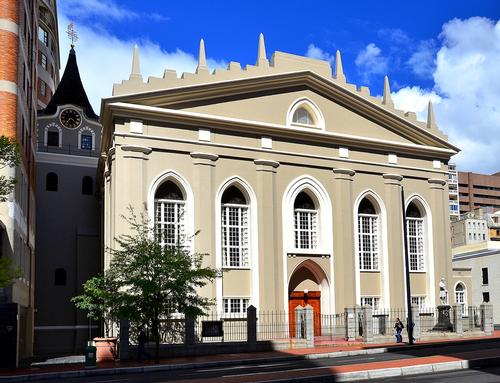 Groote kerk in Cape TownPhoto: Ossewa CC 3.0 Unported no changes
Groote kerk in Cape TownPhoto: Ossewa CC 3.0 Unported no changes
The Groote Kerk is probably the most famous church in South Africa. The church was built in the 19th century on the site of an earlier Dutch Reformed Church. The Groote Kerk has a number of particularly interesting sights, such as the lockable pews, the enormous pulpit, the pipe organ with 6000 pipes and a special soapstone floor, under which about 200 people are buried.
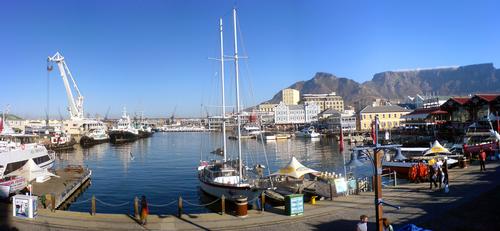 Cape Town Victoria and Albert WaterfrontPhoto: Damien du Toit CC 2.0 Unported no changes made
Cape Town Victoria and Albert WaterfrontPhoto: Damien du Toit CC 2.0 Unported no changes made
The harbor used to be neglected, but the revamped Victoria and Albert Waterfront is now a vibrant cultural and recreational hub: one of the city's trendiest and most attractive contemporary attractions. Victorian warehouses now house restaurants, cafes and shops. It is a great place for shopping and dining. Visitors can also take a sailing trip around the docks on a chartered cruise boat.
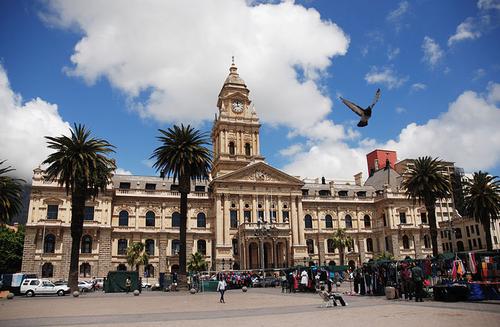 Cape Town TownhallPhoto: Vladimiramax CC 3.0 Unported no changes made
Cape Town TownhallPhoto: Vladimiramax CC 3.0 Unported no changes made
Cape Town's imposing Edwardian City Hall was the scene of Nelson Mandela's dramatic speech to the South African nation upon his release from prison. The town hall is popular with tourists, although it is not very well maintained. The building opened its doors as City Hall in 1905. Its most notable features include the exterior with a clock tower said to be exactly half the size of London's Big Ben. City Hall is also used as a concert hall for the Cape Philharmonic Orchestra.
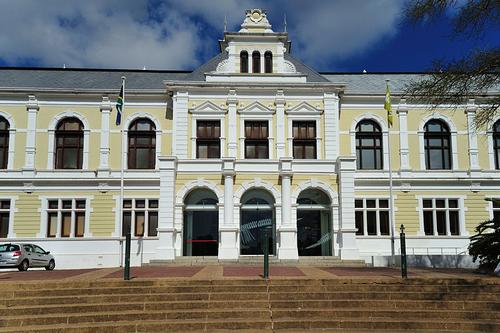 South Africa Museum Cape TownPhoto: Josephou CC 3.0 Unported no changes made
South Africa Museum Cape TownPhoto: Josephou CC 3.0 Unported no changes made
The South Africa Museum is South Africa's oldest museum, displaying a wide variety of artifacts related to the country's national history and the cultural history of the African people. Check out the terracotta Lydenburg Heads. These are said to be the oldest examples of images taken in Africa.
The Gold of Africa Museum houses a fine collection of artifacts from all parts of Africa. In addition to being beautiful to look at, many gold objects have interesting stories. If you want to take home some glitter and glamor gifts, you can buy them on the spot. The souvenir shop sells casts of some of the designs on display.
Tips
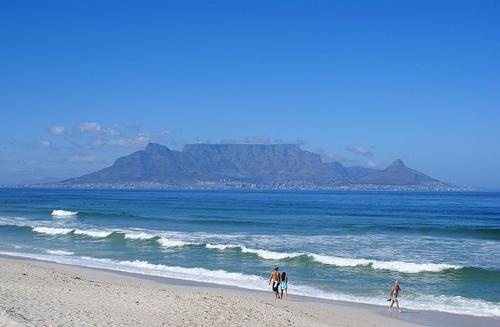 Table Mountain Cape TownPhoto: Daniel van der Merwe CC 2.0 Unported no changes
Table Mountain Cape TownPhoto: Daniel van der Merwe CC 2.0 Unported no changes
Table Mountain is Cape Town's most visited landmark. A cable car (gondola) takes visitors to the top at 1085 meters in just six minutes. Once there, on a clear day you can see spectacular panoramic views that make a big impression. The more adventurous can follow different trails that run across the mountain and enjoy even more beautiful views of the city and ocean.
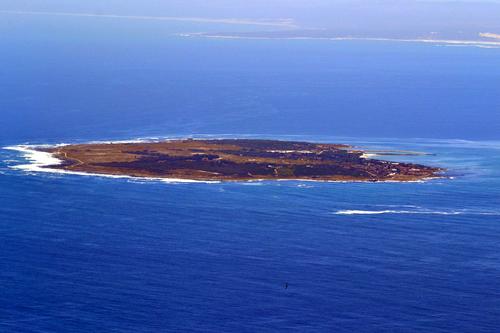 Cape Town Robben IslandPhoto: PHParsons CC 3.0 Unported no changes made
Cape Town Robben IslandPhoto: PHParsons CC 3.0 Unported no changes made
Robben Island is part of the UNESCO World Heritage Site and can be reached by a short ferry ride through Table Bay. The most well-known prisoner of this infamous prison was of course Nelson Mandela. Prison tours are conducted by former political prisoners. A thought-provoking museum focuses on the island's history, which has also been used as a leper colony. Robben Island is today a peaceful and beautiful place and home to colonies of seals and penguins.
Useful links Cape Town
BBC Country ProfilesWorld Fact Book Explore all Countries
How to call
Last updated June 2024
Copyright: Team - The World of Info